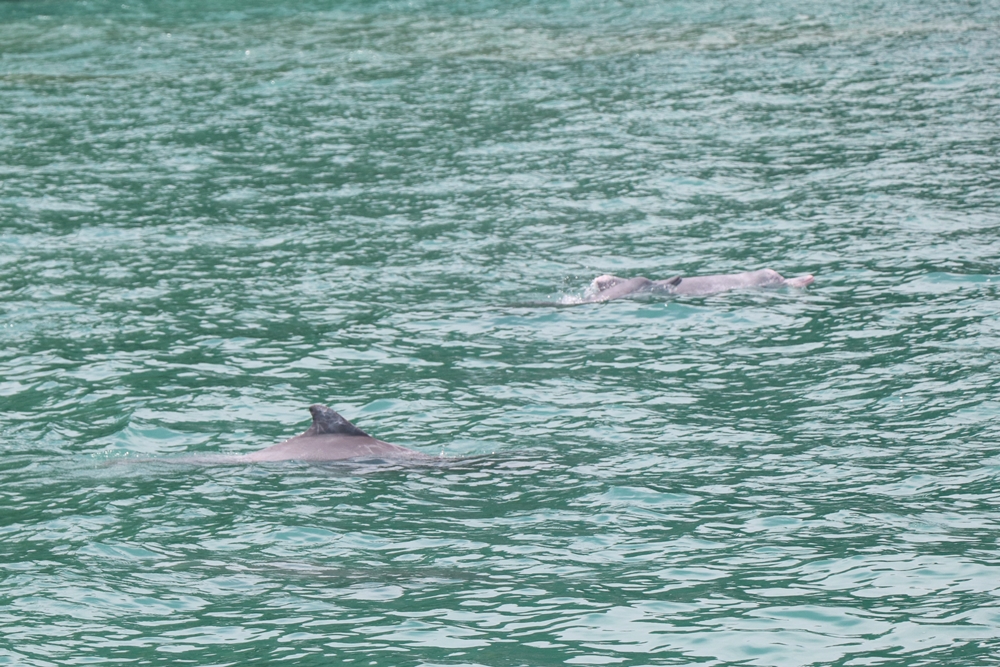LANGKAWI, July 17 ― The closest most Malaysians will encounter dolphins in the wild is through National Geographic documentaries on TV or YouTube.
Some might think they would have to travel abroad to Australia or Florida Keys to get a sight of these cetaceans cavorting in the sea, but here’s a fun fact for Malaysians without a passport: we have dolphins living in the Straits of Malacca.
That’s right; there are several species that can be spotted off the coast of Langkawi in Kedah and these include the Indo-Pacific Bottlenose, the Indo-Pacific humpback and the beluga-like Irrawaddy dolphin.
But even those who knew of their existence in Malaysian waters often thought that dolphins are migratory in nature, said Dr Louisa Ponnampalam, the co-founder of MareCet, a marine mammals research and preservation organisation.
“Many mistakenly believed that dolphins are seasonal creatures, swimming down from the Andaman seas at certain times of the year.
“However they are residents of waters surrounding Langkawi and even along the Straits of Malacca,” she said.
Even so, dolphin sightings there have grown more infrequent these days. Despite being protected under the Fisheries Act of 1985 ― yes, it’s ironic ― these marine mammals are endangered.
To date, MareCet has catalogued 27 species of whales, dolphins, porpoises and dugongs in Malaysian waters, based on live sightings and their carcasses from being stranded on shore.
Dr Louisa attributes the greatest threat to dolphins in Malaysia to human encroachment to their territory ― the sea.
“Marine mammals especially dolphins in Langkawi face several dangers, such as being in direct competition with humans for their food, mismanagement of plastic waste, fishing trawlers as well as increase in sea traffic, which put cetaceans in danger of being in collision with seafaring vehicles,” she said.
The biggest challenge to their continued survival, she said, was lack of awareness of their presence.
“The lack of information could lead to coastal development without the best practices or mismanagement of waste, which could harm marine life,” she said.
Marine mammals are important as they are part of the Malaysia’s natural heritage and biodiversity. They are also indicators of the health of our seas as they sit on top of the food chain, she added.
But currently, there is no available published data to indicate the dolphin population in Malaysian waters, Dr Louisa said.
“I was one of the lucky few to catch a sight of them just a few kilometres from Pulau Singa Besar during a recent media trip there.
“Several pods of the dark grey Indo-Pacific humpback with their tall, falcate dorsal fins were seen swimming in the blue-green waters near our yacht, though they did not come close enough to be touched,” she said
Even so, seeing them in their natural habitat like this was nothing short of magical.
Dr Louisa said seeing them during the trip was nothing short of luck, as the dolphins off Langkawi are often found in waters with an abundant food source but have learnt to steer clear of areas with high vessel traffic.
Partnering MareCet in saving these beautiful residents of our seas is 1Utama Shopping Centre.
Through its Feed-The-Fish and Recycle-A-Bottle, Go Green campaigns, the shopping mall has contributed RM12,000 to MareCet.
Land-locked urbanites too can help in conservation efforts.
1 Utama’s Feed-The-Fish initiative allows mallgoers to purchase fish food packets for RM1 at the kiosk located at its Rainforest wing on the lower ground level. They can then feed the 3,000 koi fish that are housed in multi-level ponds in the Rainforest section of the mall.
All proceeds of the Feed-The-Fish campaign will go to MareCet.























